Racial unrest rocks America; protestors demand justice for George Floyd
By Final Call Staff | Last updated: May 30, 2020 - 5:02:02 PMWhat's your opinion on this article?
The death of George Floyd and subsequent protests have provoked fiery responses from around the globe.
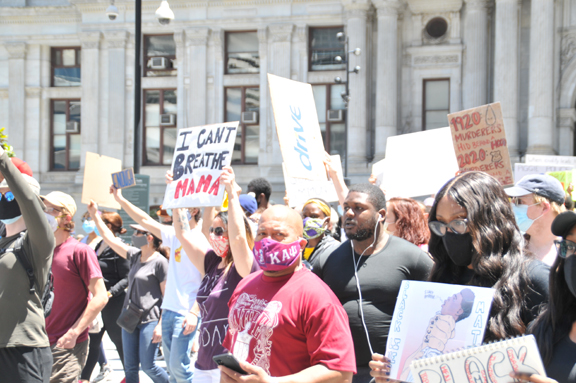
|
The city of Minneapolis experienced days of unrest after 46-year-old George Floyd died on Memorial Day in the custody of former police officer Derek Chauvin. The Memorial Day death was captured on a 10-minute video that went viral and sparked coast-to-coast outrage, riot and rebellion.
By May 30 unrest had been reported in over 30 cities and governors in several states were calling for the National Guard. President Trump offered to send in the U.S. military to help end the feverish activity in American streets. Many Black activists and advocates called for more than a police and military response, saying support, services and funding were needed in the same Black neighborhoods where demonstrations exploded into anger with businesses and buildings torched in many cases.
While calls came for demonstrators to go home and observe curfews set in many locales, the degree of disgust and frustration was strong. Bakari Sellers, a former South Carolina legislator and news analyst, told CNN it wasn’t enough to tell people get out of the streets. We’ve been here before, he said during a Saturday evening broadcast. Don’t tell Black people to get out of the streets, unless you are going to deal with problems that drove people to the streets, he added May 30.
Other Blacks bitterly complained that cries to “stop the violence” were never directed at police officers while police brutality and racial oppression were forms of violence that have bludgeoned Black people for centuries.
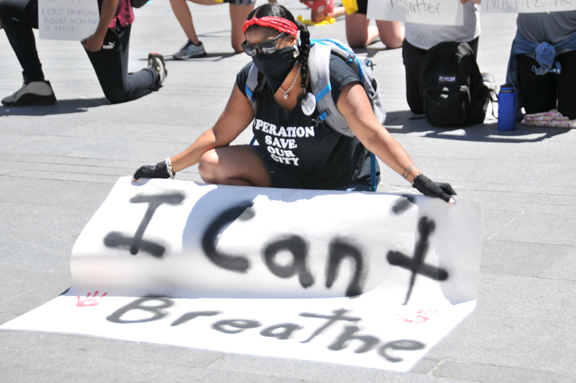
By May 30 unrest had been reported in over 30 cities and governors in several states were calling for the National Guard.
|
|
Black activists and advocates called for more than a police and military response, saying support, services and funding were needed in the same Black neighborhoods.
|
In Chicago police officers and protestors battled on downtown streets in the Windy City, which has a history of police violence and torture. This social explosion was the first test for the city’s new Black police chief, David Brown.
Miami, Seattle, Los Angeles, and Philadelphia were among cities were protests took place. In Tulsa, Oklahoma’s Greenwood District, the site of a 1921 massacre of Black people that left as many as 300 dead and the city’s thriving Black district in ruins, protesters blocked intersections and chanted the name of Terence Crutcher, a Black man killed by a police officer in 2016. Other peaceful protests were being held in California, Delaware, Florida, Massachusetts, New Jersey, Pennsylvania and South Carolina, the Associated Press reported.
In Tulsa and Wilmington, Delaware, protesters made their way onto nearby interstates and shut them down temporarily. In Tallahassee, Florida, a pickup truck drove through a crowd of protesters, sending some running and screaming as the vehicle stopped and started and at one point had a person on its hood, police said, but no serious injuries were reported.
In Columbia, South Carolina, a television reporter for WIS-TV was injured by rocks thrown Saturday amid protests outside the Columbia Police Department. Several hundred people participated in the demonstration, tearing down the American and state flags in front of the police department’s headquarters. They also swarmed a Columbia police car, breaking its windows, The State reported.
In Los Angeles protesters chanted “Black Lives Matter,” some within inches of the face shields of officers. Police used batons to move protesters back and shot rubber bullets to scatter the crowd. One man used a skateboard to attempt to break the windshield of a police SUV. A spray painted police car burned in the streets. Similar stories were told in cities from Los Angeles to outside the White House in the nation’s capital.
Minnesota Gov. Tim Walz fully mobilized the state’s National Guard and promised a massive show of force to help quell unrest that has grown increasingly destructive. Protests, too, started calmly—in cities from New York to Oakland, California, from Atlanta to Portland, Oregon—before many descended into violence May 29.
The massive crowds involved, with many people not wearing masks or practicing social distancing, raised concerns among health experts about the potential for the spread of the coronavirus.
Hundreds of people were arrested Friday, May 29, and police used batons, rubber bullets and pepper spray to push back crowds in some cities. Many departments reported officers were injured, while social media was awash in images of police using forceful tactics, throwing protesters to the ground, using bicycles as shields, and trampling a protester while on horseback.
Comments from President Trump stoked the anger, when he fired off a series of tweets criticizing Minnesota's response, ridiculing people who protested outside the White House and warning that if protesters breached the fence, “they would ... havebeen greeted with the most vicious dogs, and most ominous weapons, I have ever seen.”
Minnesota has steadily increased the number of National Guardsmen it says it needs to contain the unrest, and has now called up 1,700. The governor is also considering a potential offer of military police, which the Pentagon put on alert.
Governors in Georgia, Kentucky, Ohio and Texas activated the National Guard after protests there turned violent overnight May 29, while nighttime curfews were put in place in Portland, Oregon, and Cincinnati.
A person was killed in downtown Detroit just before midnight after someone fired shots into an SUV near the Greektown entertainment district, police said. Police had initially said someone fired into the crowd from an SUV. And police in St. Louis were investigating the death of a protester who had climbed between two trailers of a Fed Ex truck and was killed when it drove away.
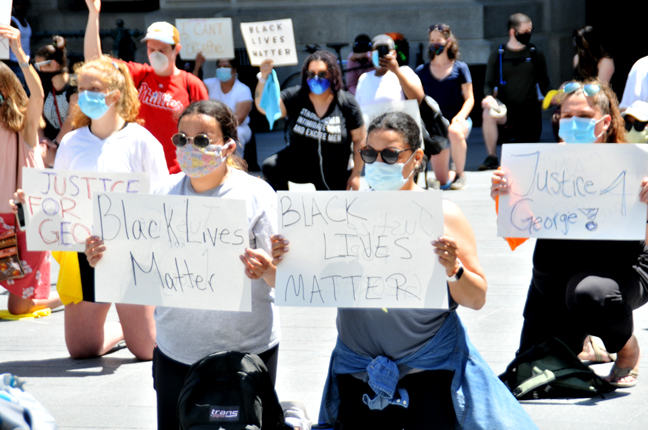
Protestors in Philadelphia show solidarity in their apathy for police brutality.
|
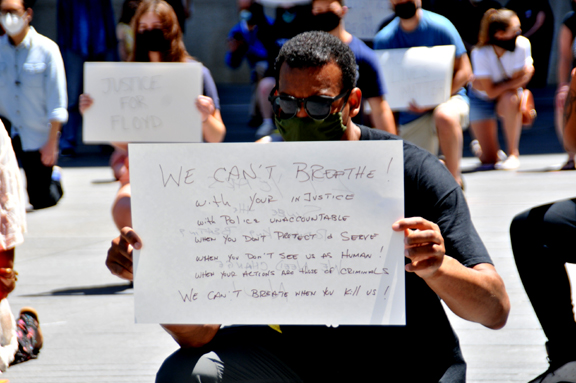
Calls came for demonstrators to go home and observe curfews set in many locales, but the degree of disgust and frustration was strong.
|
Atlanta saw some of the most extreme unrest. While crews in that city worked to clean up glass and debris from rioting the night before, a large electronic billboard on Saturday morning May 30 still carried the message, “If you love Atlanta PLEASE GO HOME,” echoing the mayor’s pleas. Video posted to social media showed New York City officers using batons and shoving protesters down as they took people into custody and cleared streets. One video showed on officer slam a woman to the ground as he walked past her in the street.
“Our country has a sickness. We have to be out here,” said Brianna Petrisko, among those at lower Manhattan’s Foley Square, where most were wearing masks amid the coronavirus pandemic. “This is the only way we’re going to be heard.”
The damning Minnesota video shows Mr. Floyd face down in the street, with then-officer Chauvin’s knee on Mr. Floyd’s neck as the Black man cries out, “I can’t breathe.” The incident brought back memories of Eric Garner being choked to death on a Staten Island sidewalk by former New York police officer Daniel Pantaleo in 2014.
Hennepin County, Minn., prosecutor Michael Freeman didn’t announce no charges against officers Chauvin, Tou Thao, Thomas Lane and J. Alexander Kueing, who were on the scene. But he suggested more charges could be forthcoming.
All were swiftly fired by Chief Medaria Arradondo for their involvement in Mr. Floyd’s death. However, with the Floyd death, the rebuke of the officers from around the country was swift, and strong. On social media, police officers of all races used their personal accounts to condemn the Minnesota officers’ actions. The National Black Police Association wrote on Facebook, “[George Floyd’s] death was unnecessary and grossly negligent. The question becomes the true intent of the officers, and the ongoing law enforcement conversation surrounding the preventable deaths of Black citizens, which is often an aspect of policing that goes unresolved in response to these deadly incidents.”
The NBPA added, “Let’s speak truths: In America, it is clear the humanity of Black people appears invisible to law enforcement. What other explanation would there be for Chauvin to lean on the neck of a handcuffed Black man until he dies?”
Unrest and outrage rocked the Twin Cities—St. Paul and Minneapolis—with damage or destruction to several hundred buildings and businesses and the torching of the Minneapolis Police Department's 3rd Precinct, which was home to officers involved in the Floyd death.
President Donald Trump went so far as to threaten state-sanctioned violence against the protestors. In a tweet, the president wrote, “These thugs are dishonoring the memory of George Floyd, and I won’t let that happen. Just spoke to Governor Tim Walz and told him that the Military is with him all the way. Any difficulty and we will assume control. But when the looting starts, the shooting starts.” Mr. Trump seemed to be echoing the phrase used in 1967 by Miami police chief Walter Headley in an interview with the Miami Herald, where he also said that, “85 percent of all violent crimes involve negroes.”
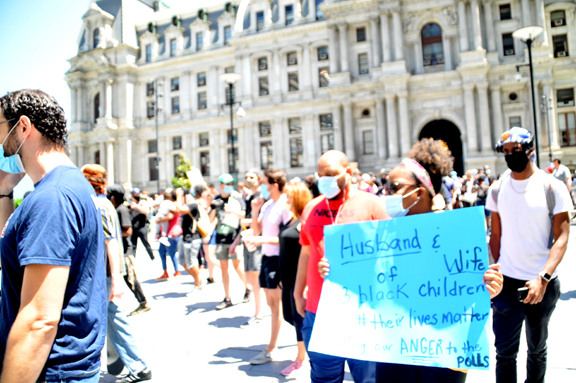
Miami, Seattle, Los Angeles, and Philadelphia were among cities were protests took place.
|
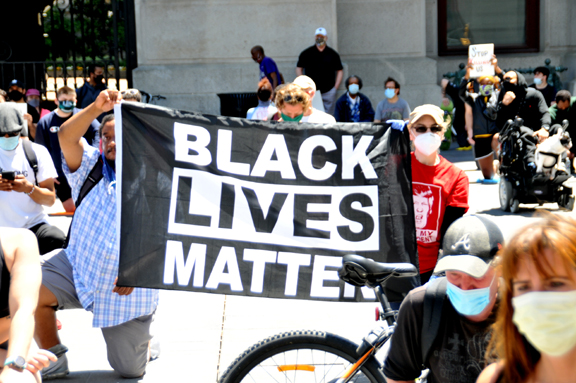
Philadelphia protestor holds "Black Lives Matter" sign during one of many nationwide protests.
|
Anthony Shahid was on the ground after Mike Brown, Jr., was shot and killed by Ferguson, Mo., officer Darren Wilson—who was cleared by the Justice Department of wrongdoing and never faced local charges. Black people, especially young Black men, are at the point where they are tired, fed up, and unwilling to lay down in the face of police injustice, said the longtime activist and advisor to Mike Brown, Sr., whose son was killed in 2014.
“These young brothers are not going to take it anymore. They don’t want to hear from any preachers, and they don’t want to hear from any politicians trying to tell them to be politically correct,” Mr. Shahid told The Final Call.
“They know that these politicians and preachers will never be on the ground when things kick off because they’re sitting back and waiting to see how it’s going to go, first. And when they do show up, these young brothers know all they’re going to say is that everything is going to be Ok and let’s be peaceful. These young brothers don’t want to hear that anymore. They’re tired of hearing that.”
The Associated Press and Final Call staf contributed to this report. Look for ongoing updates as this story continues to evolve.
INSIDE STORIES AND REVIEWS
-
-
About Harriett ... and the Negro Hollywood Road Show
By Rabiah Muhammad, Guest Columnist » Full Story -
Skepticism greets Jay-Z, NFL talk of inspiring change
By Bryan 18X Crawford and Richard B. Muhammad The Final Call Newspaper @TheFinalCall » Full Story -
The painful problem of Black girls and suicide
By Charlene Muhammad -National Correspondent- » Full Story -
Exploitation of Innocence - Report: Perceptions, policies hurting Black girls
By Charlene Muhammad -National Correspondent- » Full Story -
Big Ballin: Big ideas fuel a father’s Big Baller Brand and brash business sense
By Bryan Crawford -Contributing Writer- » Full Story






 Click Here Stay Connected!
Click Here Stay Connected!








